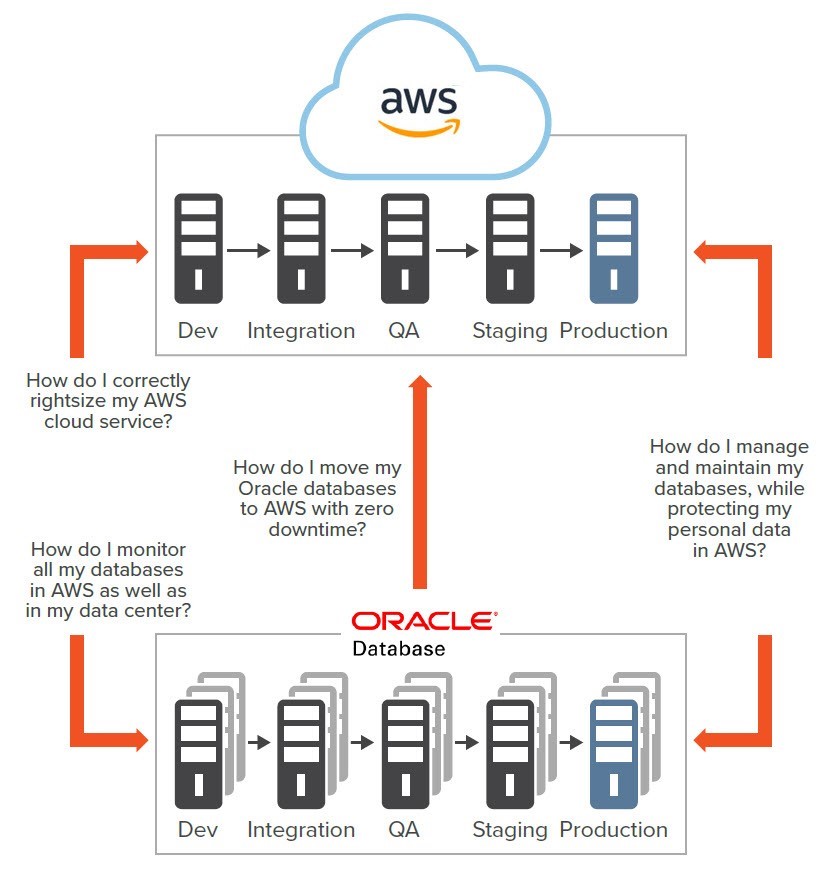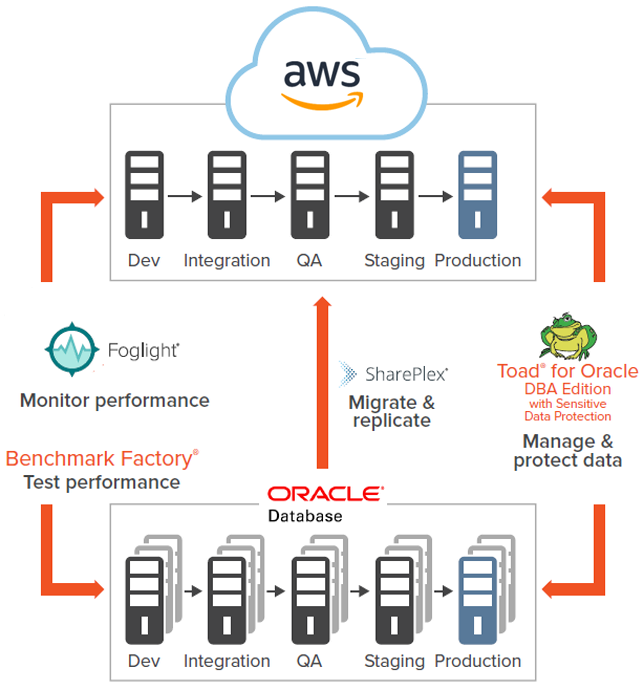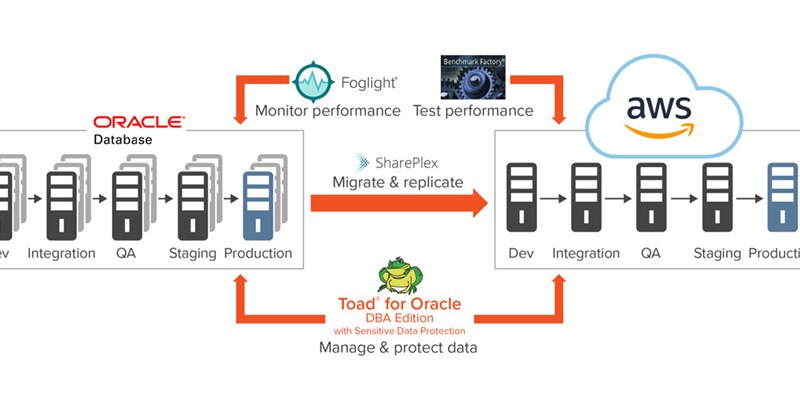There are many advantages of migrating databases to a cloud services provider such as Amazon AWS, such as faster provisioning, increased reliability, flexible resource scaling and reduced CapEx. However, if you are undertaking an Oracle database migration to AWS from your on-premises data center, there are a few questions you should consider before you begin, such as:
- Which of your Oracle databases is best suited for a migration to AWS?
- Do you go for IaaS (EC2) or DBaaS (RDS)?
- How will you minimize downtime and avoid data loss during the migration?
- How will you monitor database performance and ensure scalability without blowing your AWS budget?
- Do you have the tools to replicate Oracle data between on-premises infrastructure and AWS?
- How do you intend to identify and secure your personal and sensitive data?
For database DBAs and data migration specialists, these are serious questions. Without good answers, there could be severe consequences, such as business interruption, financial impacts, loss of credibility and competitive disadvantage.
With these risks in mind, many companies take the safe route and begin their migration journey by considering their non-production databases, rather than their mission-critical production ones, so the lessons they learn can later be applied to larger migration projects.
In my experience, one of the major challenges of a database cloud migration is understanding the true cost in terms of expected monthly subscription billing. From speaking with customers, I’ve learned that many companies oversubscribe either because they didn’t right size their service tier or were unable to because they didn’t have the right tools. Right sizing can be accomplished by understanding the performance metrics of your Oracle database in AWS compared to its performance on-premises, while taking into account both average and peak operating performance – like month-end reporting workloads – to ensure you optimize resources and cost.
Most cloud service providers, including AWS, offer good advice on how to right size, but you should also consider future demands in terms of scalability (more users, more data) so you can benefit from elastic compute capabilities without breaking the bank.
Performance testing, monitoring and comparing on-premises Oracle databases with a similarly configured database in AWS, prior to and after the migration, helps DBAs better understand both the performance differences when those databases are subject to different workloads and the impacts of future workload demands as the business grows.
With the emergence of data privacy regulations, such as GDPR and similar regulations in the US and other parts of the world, securing personal and sensitive data in the public cloud presents a major challenge.
The first hurdle for DBAs to overcome is identifying where such data exists across all their Oracle databases – both production and non-production. Defining personal and sensitive data requires rules-based tools that can be configured to suit the organization, provide clear reporting and automated so the whole process can be repeated on a regular basis to ensure ongoing regulatory compliance. Based on the reporting, DBAs can then take the appropriate steps to protect the data (encryption, masking, etc.) prior to data migration.
Once migration is ready to proceed, consider how to move your data structures and data into the cloud with minimal impact and whether a maintenance window, where the database is down, is appropriate. For non-production databases, this may be acceptable, but for production databases, it most probably won’t be.
You may also need to continuously replicate database transactions between the data center and the cloud, where the cloud database is used for offload reporting or other use cases where both databases need to be continuously in-sync. In this case, downtime is not an option and good replication tools become a necessity.

The many challenges to consider when migrating an Oracle database to AWS
If you plan to go with EC2, you may also want to consider reducing some of your most expensive Oracle licenses to lower editions, upgrade to a later version or change to a different server OS.
The good news is that Quest provides robust solutions that simplify the migration process by moving or replicating data safely and securely without impacting availability. Quest benchmarking and performance monitoring tools also ensure you understand the differences in database performance between on-premises and cloud, and help quantify the impact of increasing workloads so you have the optimum service tier both now and the future.

Quest’s database solutions for an Oracle database migration to AWS
For those of you attending this year’s AWS re:Invent conference in Las Vegas on December 2 – 6, be sure to drop by our booth (#3613) to find out how Quest’s database solutions for cloud migration can simplify the task and ensure you don’t get burned by unplanned downtime, data loss or higher than anticipated subscription costs.
For more information on how Quest can support your Oracle Database migration to AWS, be sure to read this Technical Brief.


